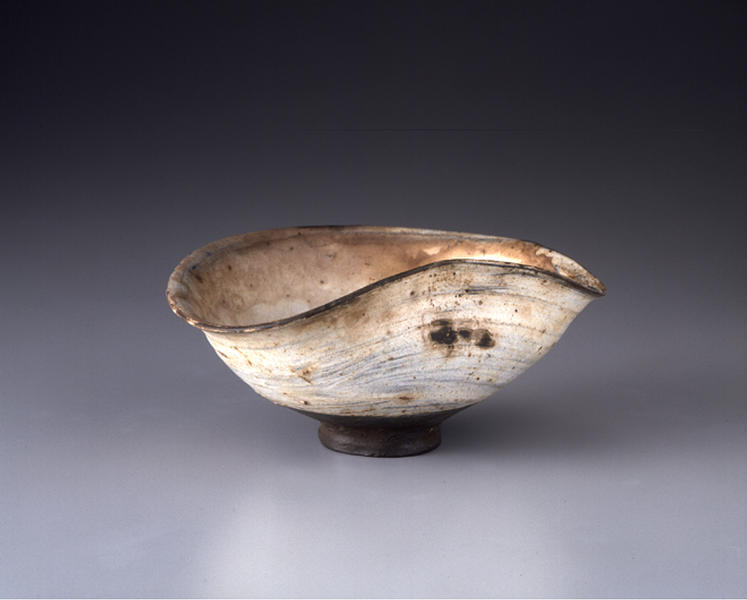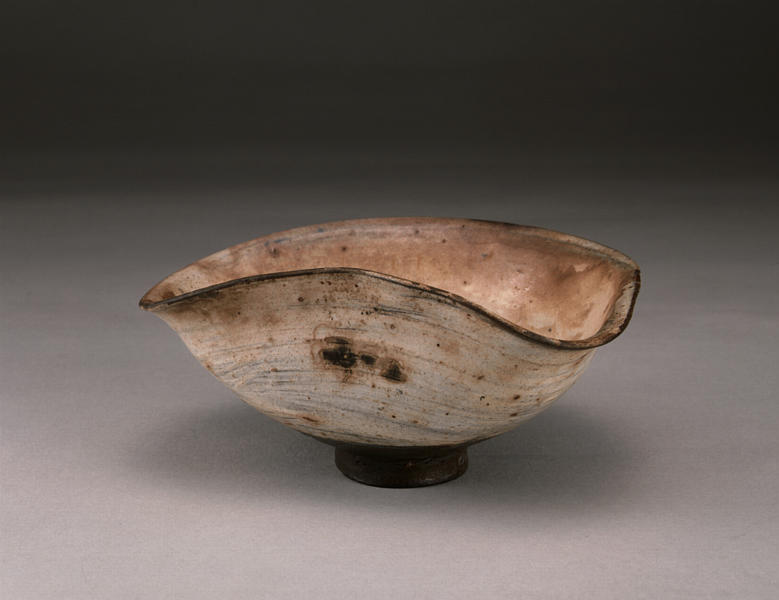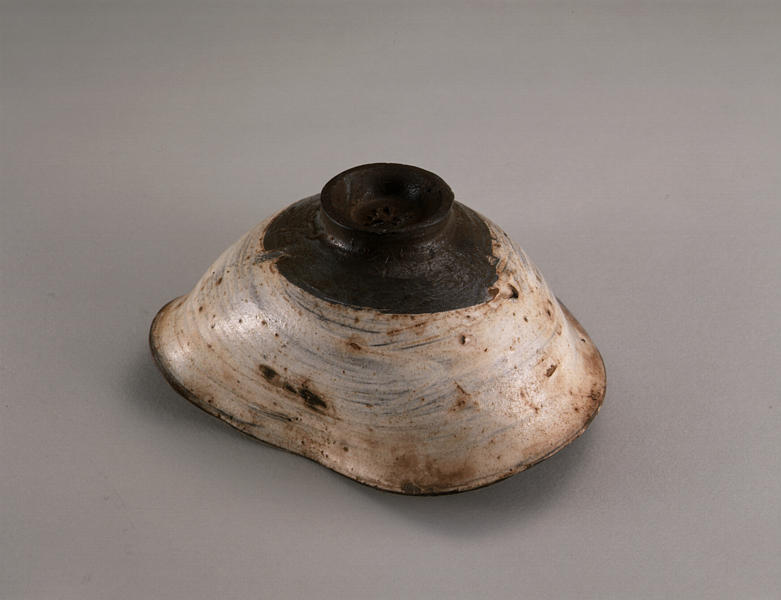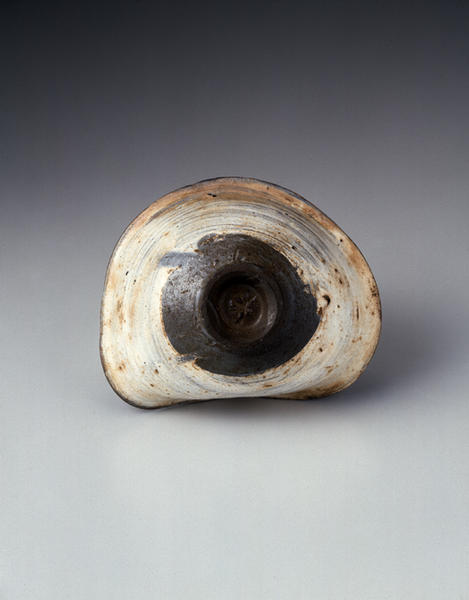Tea Bowl, known as WANGETSU
- Korea
- Korea, Yi dynasty
- 16c
- Punch'ong ware, Hakeme type
- H-6.5 D-14
Catalogue Entry
Tea bowls fired in Korea during the Yi dynasty period and imported to Japan are called 高麗茶碗. Although the word 高麗 is written in Japanese the same way as the word meaning "Koryo period" in Korea, 高麗 in this context does not refer to a specific historical period but simply means "Korea", as it originally meant. In the late Muromachi period, around 16th century, instead of the shoin-style of tea in which Chinese tea bowls had been regarded as supreme, Korean tea bowls rose to the highest ranks of tea bowls in the wabi-style of tea, a style promulgated by Murata Juko. These bowls are divided into various types and the long list includes the following main types: Ido, Unkaku, Mishima, Komogai, Hakeme, Kohiki, Katade, Tamagode, Totoya, Irabo, Soba, Kakinoheta, Kinkai, Goshomaru, Goki, Amamori, Hansu, and Gohon. While Ido, Mishima, and Kohiki types of tea bowls were originally used as ordinary bowls for daily use and then introduced to the world of tea ceremony, many types such as Irabo and Gohon were made by orders from Japan.
The white glaze on blackish clay looks as if it was wiped on quickly with a brush, thus giving rise to the name hakeme (brushed on, brush marks) in Japan for bowls like the present piece. Most of these bowls were fired at the foothills of the Kyeryong mountains near Kongju-gun, Ch'ungch'ong-namdo in the early days of the Yi dynasty. This tea bowl, the size which is, incidentally, impeccable, flaunts a contrast between a solid white inside and the various levels of light and shade produced by the brush's movement on the exterior. The different brushwork between the interior and the exterior is one of the most captivating visual effects of this bowl. The foot looks tight and compact. This somewhat deformed bowl indicates that this tea bowl was not a special order item, deducing from the existence of a mark on the clay caused by it being stuck in the kiln to another piece during firing; the effect was purely accidental.



